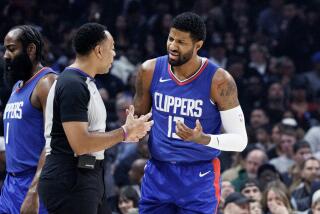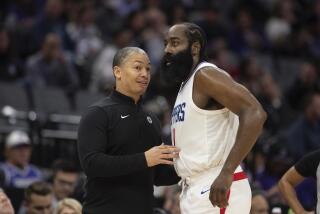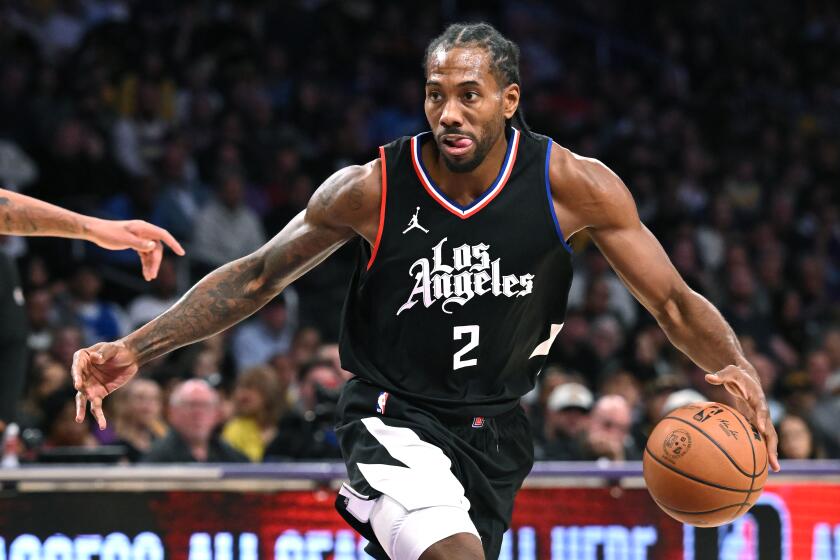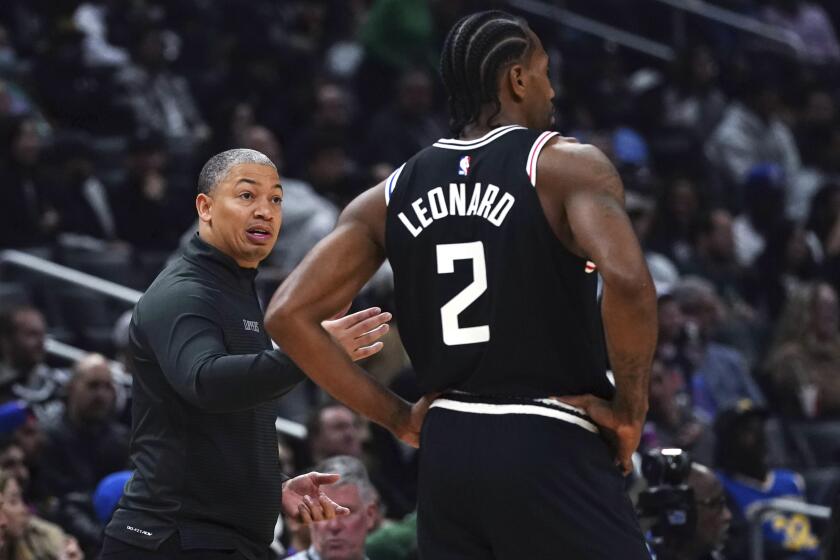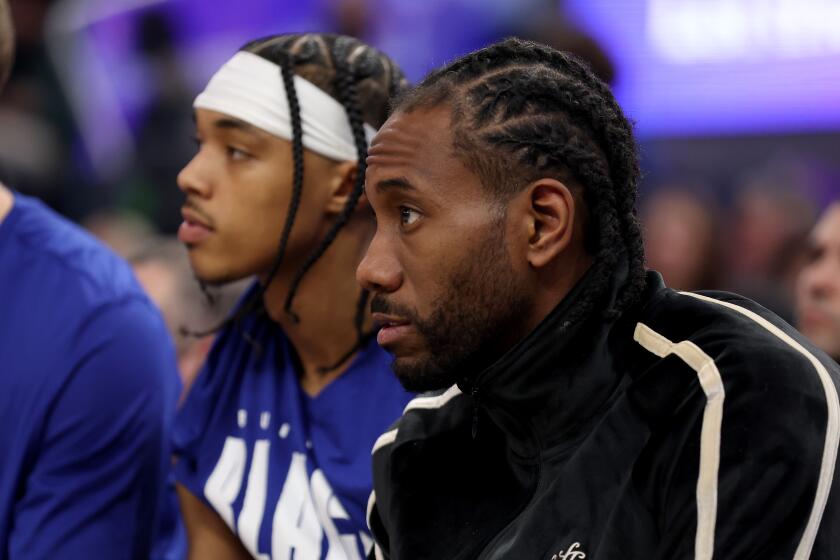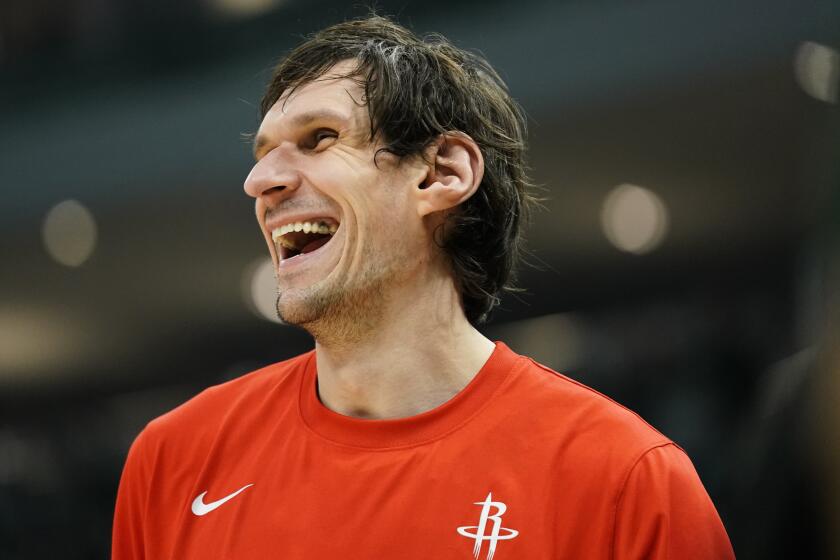No rest for Chris Paul’s weary hamstring with loss to Rockets
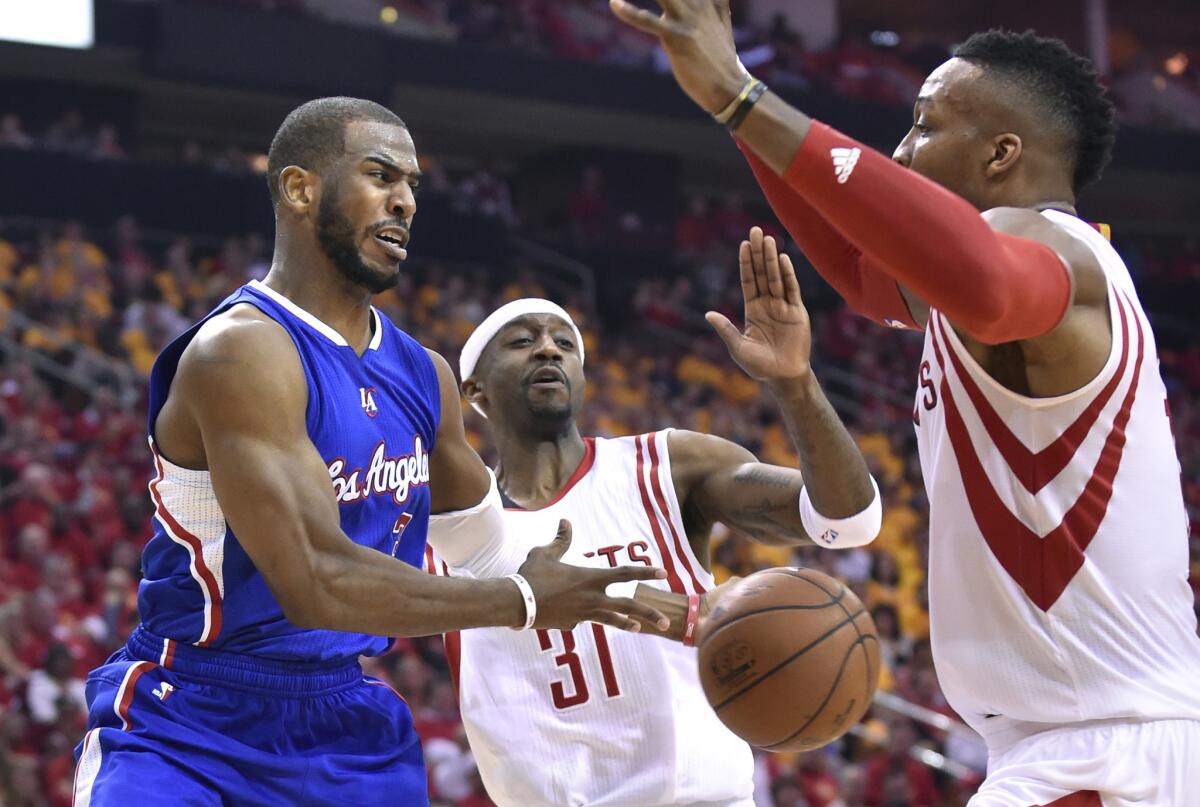
The Clippers lost more than a game here Tuesday night. They also lost an opportunity to give Chris Paul additional rest.
Had the Clippers closed out the Houston Rockets in the Western Conference semifinals, their point guard could have had as much as a week off to take it easy on his strained left hamstring before his next game.
“Obviously, any kind of rest we can get Chris is great,” Clippers Coach Doc Rivers said before the game.
They will have to wait for a breather. Paul will have to play again Thursday after the Clippers’ 124-103 loss in Game 5 at the Toyota Center trimmed their lead in the best-of-seven series to 3-2.
The conference finals are scheduled to start May 19 or 20, though there is a possibility of the series opener moving up to May 17 or 18. That seems unlikely considering the Golden State Warriors and Memphis Grizzlies are tied at two games apiece in their series.
Paul made his first appearance in Houston in this series Tuesday after sitting out the first two games because of his injury. He pronounced his hamstring as closer to full strength and played like it, finishing with 22 points and 10 assists in 35 minutes.
That represented a significant increase from the 23 minutes Paul played in Game 3 and his 26 minutes in Game 4. Rivers said Paul appeared to be gaining confidence in his hamstring, though the coach added he remained at risk of aggravating the injury for the rest of the playoffs.
Rivers said he deferred to trainer Jasen Powell when it came to restricting Paul’s minutes.
“Whatever J.P. says is what I’m doing, no matter what the player says,” Rivers said. “A lot of times with injuries, you can go a little bit of both. With this one, you only listen to the trainer. The player, he doesn’t have any say in this one because of course you feel good, but we have to be careful.”
Paul said he hoped there would come a point when he didn’t have to think about the hamstring anymore.
“That would mean we would keep playing, keep winning,” Paul said.
They’re no hacks
The Clippers have not employed the intentional fouling strategy as much as the Rockets have in the series, even though they have been in more situations when Rivers considered its use optimal.
“The best time, clearly, is when you have a big lead,” Rivers said before Game 5. “That’s the best time to do it, I think that’s been proven statistically. Other than that, you still do it when you feel like you want to stop a run or end quarters, so there’s different times.”
The Clippers intentionally fouled Houston’s Dwight Howard while trailing by 11 points with 44 seconds left in the second quarter Tuesday, but Howard made both free throws.
Then the Rockets went to the strategy for stretches in the second half, repeatedly sending DeAndre Jordan to the free-throw line. Jordan made seven of 16 free throws for the game.
Etc.
Howard picked up one of his six fouls during Game 4 in retaliation for getting hit by the Clippers’ Matt Barnes. Rockets Coach Kevin McHale had a suggestion for his center going into the next game. “They usually call the second one in this league,” McHale said, “so my advice is either don’t do it right away or be the first one five or six plays later.”
Follow Ben Bolch on Twitter @latbbolch
More to Read
Get our high school sports newsletter
Prep Rally is devoted to the SoCal high school sports experience, bringing you scores, stories and a behind-the-scenes look at what makes prep sports so popular.
You may occasionally receive promotional content from the Los Angeles Times.

